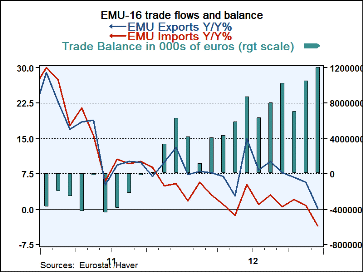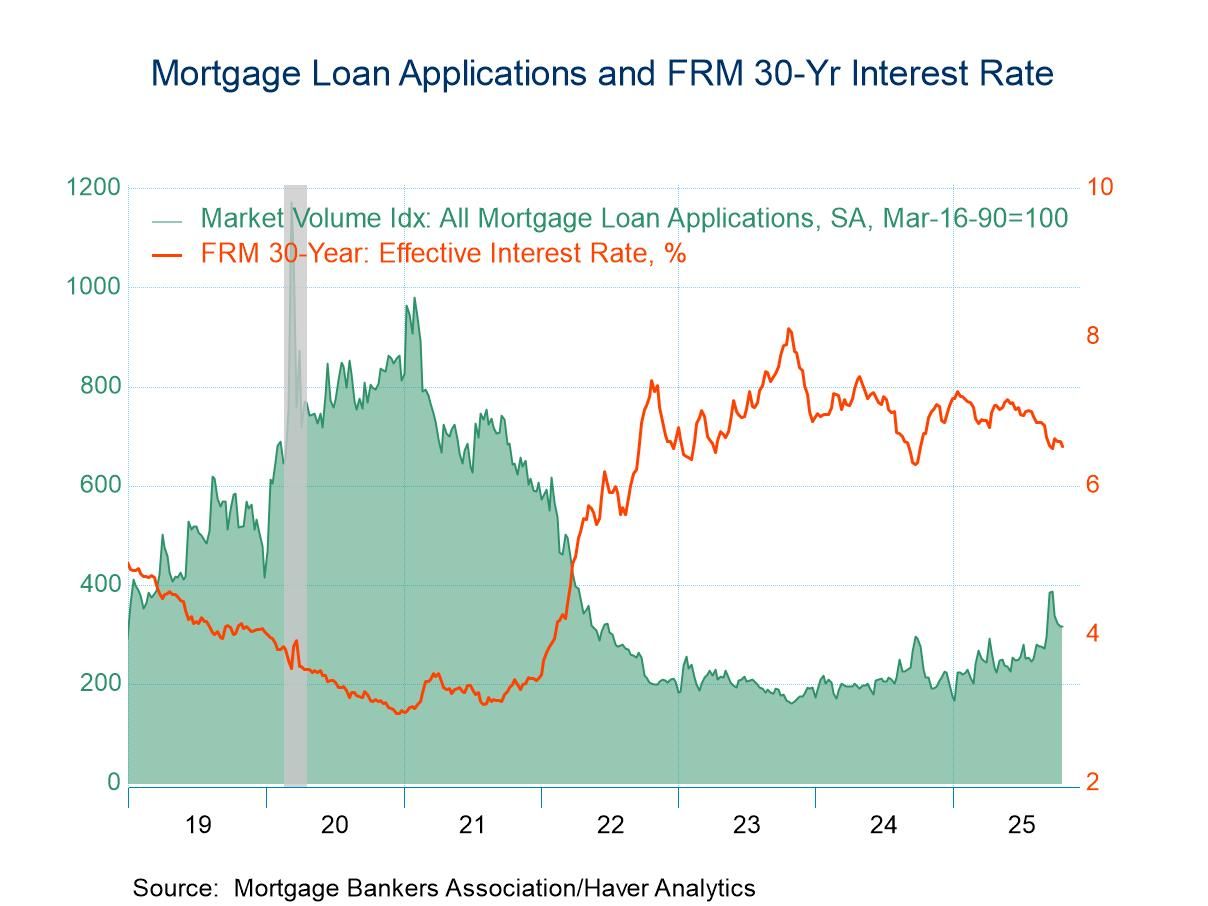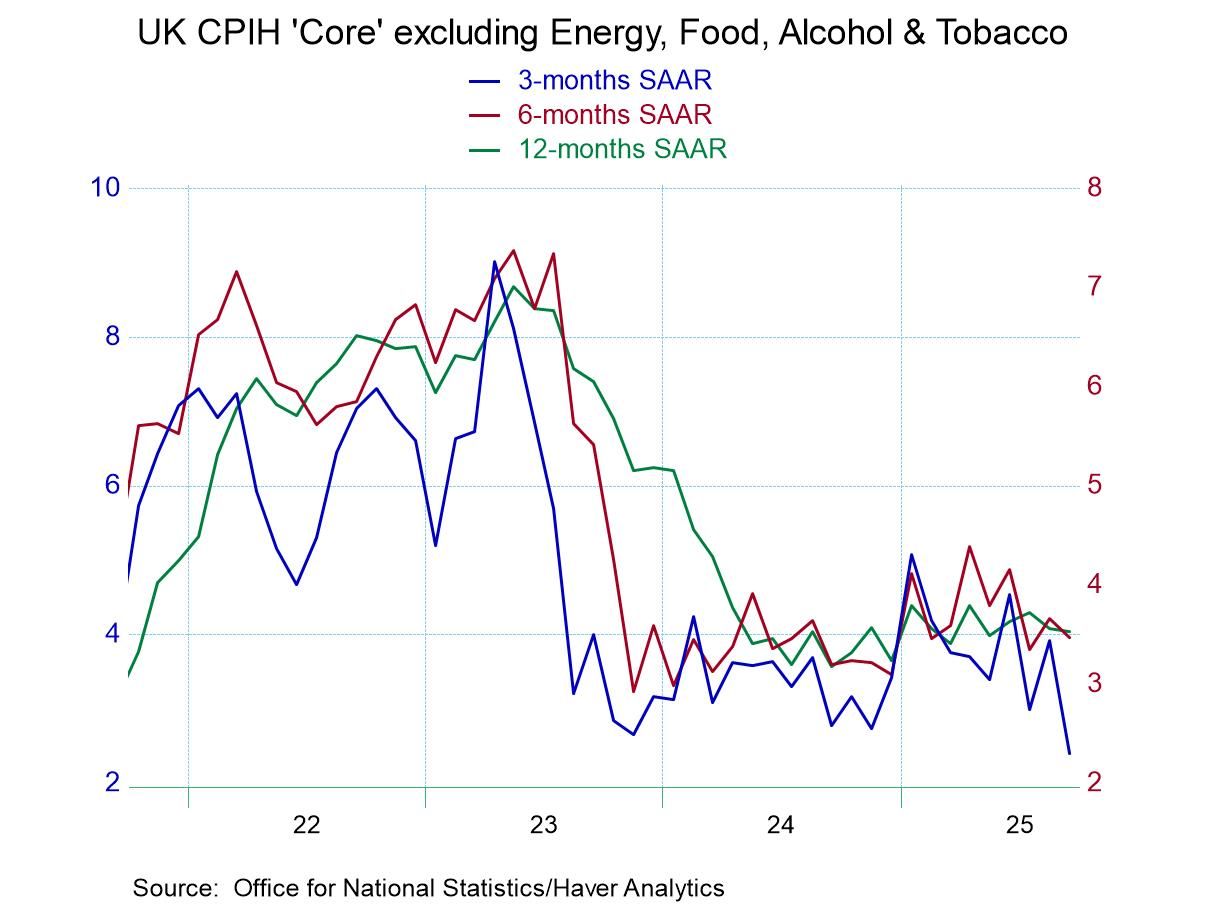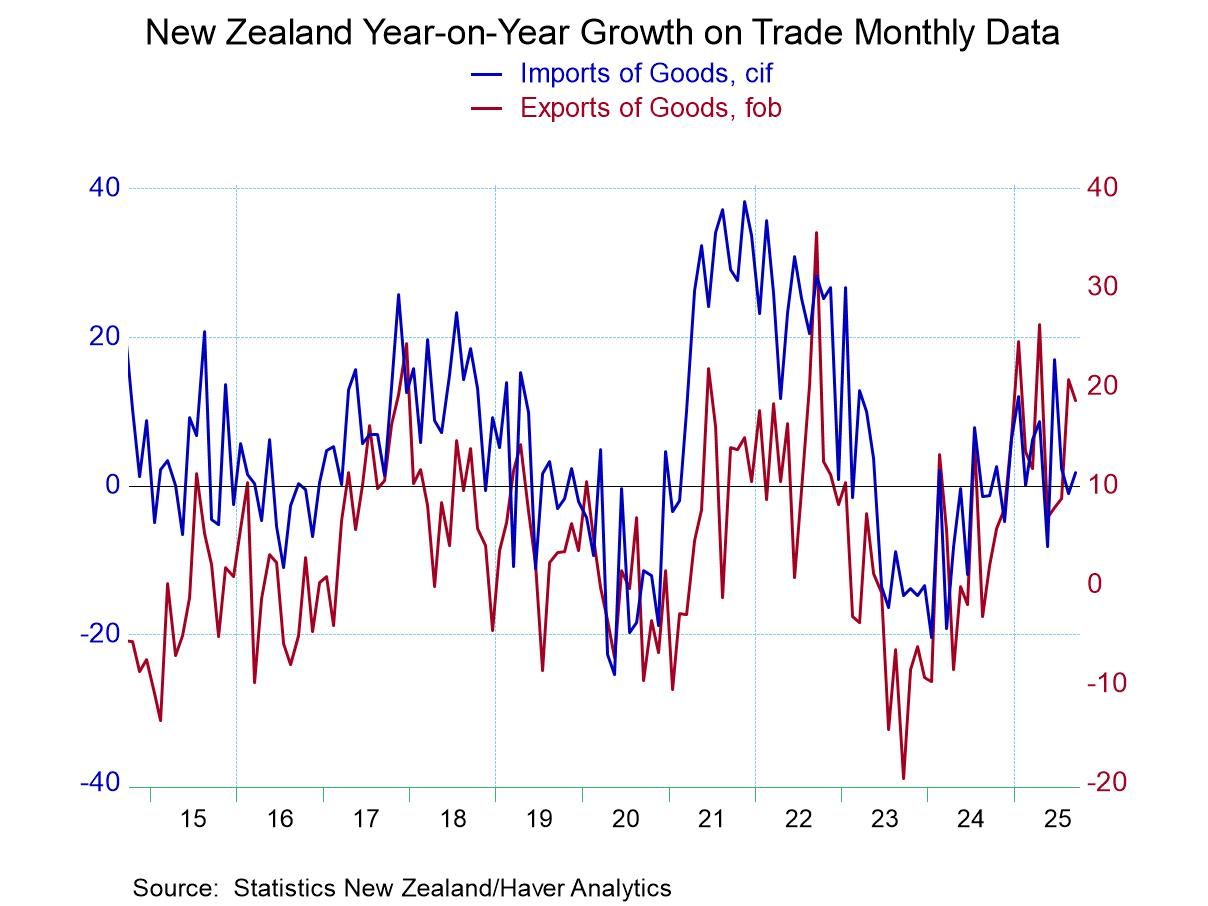 Global| Feb 18 2013
Global| Feb 18 2013EMU Trade Surplus Widens on Weak Imports
Summary
Trade balance in the European monetary union widened to 11.9 billion euro from 10.5 billion euro in December. Exports from the Zone fell by 1.9%; the drop is exceeded by a 2.9% drop in imports. The resulting weaker import performance [...]
 Trade balance in the European monetary union widened to 11.9 billion euro from 10.5 billion euro in December. Exports from the Zone fell by 1.9%; the drop is exceeded by a 2.9% drop in imports. The resulting weaker import performance is what drove the trade surplus higher. Over three months, however, exports are weaker than imports falling at a 10.2% annual rate compared to 4% weakening pace for imports. Exports and imports are both falling over six months over 12 months exports are making a small gain as imports are showing a small decline.
Trade balance in the European monetary union widened to 11.9 billion euro from 10.5 billion euro in December. Exports from the Zone fell by 1.9%; the drop is exceeded by a 2.9% drop in imports. The resulting weaker import performance is what drove the trade surplus higher. Over three months, however, exports are weaker than imports falling at a 10.2% annual rate compared to 4% weakening pace for imports. Exports and imports are both falling over six months over 12 months exports are making a small gain as imports are showing a small decline.
The chart shows a rather steady increase in the state of the trade surplus. It shows that since late 2011 there was some separation between export and import trends as exports held up slightly better than imports; but recently exports have weakened and they are nearing the same weaker growth rate as imports.
We show some details for EU and EMU member countries. It's quite clear that the trends for these countries are quite different as well as that they have very different trends as between exports and imports. Germany has exports stronger year-over-year growing 1.5% as imports are falling by 0.6%. For France exports are also outperforming imports but on a smaller margin with stronger growth overall with exports up 4.6% and imports up by only 4.3%. In the UK, a country not subject to the single currency, exports are up by 2% as imports are down by 3.7%. Also for the UK exports have become very strong over three months after being extremely weak over six months UK clearly has a different pattern going on its trade compared with either Germany or France.
Currencies have become a big issue in the G7 and in the G20. Of course they have become a problem for the euro-zone members since members have experienced different rates of inflation since the zone has been formed and therefore the various countries that are members in the zone have different levels of competitiveness to show for it. Because of this, the level of the euro exchange rate appears to be different to the various members.
Germany, for example, a very highly competitive economy, the most competitive in Europe, finds that despite the rise in the euro it is still quite competitive. Countries in the South find that the rise in the euro has been enough to create some problems with their competitiveness.
The just-released GDP data underline the sense of the European Union having difficulties. With both exports and imports declining, growth is getting a boost through the back door that is because GDP growth is so weak it's reducing imports and imports are restoring some of the lost growth by having less of it escape through the import channel. The major countries for which we have GDP data, show year-over-year growth deterioration in the fourth quarter compared to the third quarter except the Netherlands. For EMU the year-over-year growth rate slipped to -0.9% from -0.6%. And of course this weakness is what's behind the import weakness in the Zone.
When we look at Zone exports, we are looking at exports from the members to regions outside of euro-zone itself and so what they reflect is weakness in the rest of the world economy. Because there is a synchronous slowdown in global growth a number of countries are looking to exploit exports as a way to jumpstart their own economies and of course is impossible for all countries to do that.
The G7 adopted a communique making it clear that its members don't support those sorts of strategies. However, there are number of developing countries that have pursued export led growth strategies persistently regardless of the stage of the business cycle. And for them this period may turn out to be particularly difficult. China is a country, for example, that has depended upon export led growth and that because of the weakness in the global economy is being forced to accept the realities and to develop its own internal demand.
Japan, in its bid to shake off deflation, has seen its currency drop sharply and that has been a source of some conflict within the G7.
It's fair to say that these remain challenging times for the global economy. It remains very difficult time for international arrangements of countries whose policies almost necessarily come into more conflict during a time such as this. We may be seeing some increased political tensions between China and Japan as an outlet for some of the domestic frustration.
What we are experiencing is a situation where most countries are experiencing various degrees of trouble with debt. Because the world wars touched all of these countries they all have to some extent many of the same demographic problems today with an aging population, most have slowing population growth some have a shrinking population base.
Central banks around the world are pursuing easy money policies while policies of fiscal austerity are trying to battle the debt problem. There are signs that some countries may back off some of the more stringent applications of austerity in an effort to try to rekindle growth. But for the moment there's remarkable similarity in the pitch of macroeconomic policy, the monetary/fiscal mix across industrialized world. The fact that most nations are facing the same sorts of problems doesn't make it any easier to reach a solution. It probably makes it harder. Think of it as trying to put together a puzzle where every piece is cut almost exactly the same.
| Ezone Trade Trends for Goods | |||||||
|---|---|---|---|---|---|---|---|
| Dec-12 | Nov-12 | 3-mo | 6-mo | 12-Mo | 12-Mo Ago | ||
| Balance* | 11,979 euro | 10,486 euro | 1,090 euro | 9,030 euro | (1,158) euro | (1,460) euro | |
| EXPORTS | M/M% | % SAAR | |||||
| All Exports | -1.9% | 0.6% | -10.2% | -5.9% | 0.5% | 13.0% | |
| Food and Drinks | #N/A | -1.3% | -2.5% | 5.9% | 9.3% | 8.1% | |
| Raw Materials | #N/A | 1.5% | 6.2% | 10.6% | 6.4% | 15.0% | |
| Other | #N/A | 0.7% | -9.8% | 2.0% | 5.3% | 13.3% | |
| MFG | #N/A | 1.0% | -15.5% | -3.9% | 4.0% | 14.3% | |
| NONMFG | #N/A | -1.3% | 29.1% | 39.4% | 13.1% | 7.3% | |
| IMPORTS | |||||||
| ALL IMPORTS | -2.9% | -1.7% | -4.0% | -4.1% | -0.1% | 5.2% | |
| Food and Drinks | #N/A | -1.4% | -13.5% | -1.8% | 3.6% | 10.5% | |
| Raw Materials | #N/A | -1.8% | -12.6% | -14.6% | -7.2% | 2.9% | |
| Other | #N/A | -1.7% | -15.6% | -2.4% | 0.9% | 5.0% | |
| MFG | #N/A | -3.4% | -21.0% | -11.8% | -2.3% | 0.9% | |
| NONMFG | #N/A | 1.0% | -5.6% | 13.3% | 5.4% | 13.0% | |
| *Mil. Euros; Mnth or Period Avg. (SA, WDA) | |||||||
| Germany | Dec-12 | Nov-12 | 3-mo | 6-mo | 12-Mo | 12-Mo Ago | |
| Exports | -2.5% | 2.3% | -1.6% | 2.4% | 1.4% | 11.9% | |
| Imports | -1.6% | 0.4% | -3.8% | -4.5% | -0.6% | 11.0% | |
| France | |||||||
| Exports | 3.0% | -2.7% | 5.5% | 7.5% | 4.6% | 6.1% | |
| Imports | 4.9% | -3.3% | 6.1% | 1.7% | 4.3% | 4.0% | |
| EU: UK | |||||||
| Exports | 1.1% | -5.0% | 24.0% | -10.6% | 2.2% | 9.6% | |
| Imports | -3.9% | 4.8% | -4.6% | -9.6% | -3.7% | 12.9% | |
| EXPORTS | Sep-12 | Aug-12 | 3-Mo | 6-Mo | 12-Mo | 12-Mo Ago | |
| The Netherlands | -1.3% | -1.3% | 0.8% | 2.8% | 5.7% | 25.3% | |
| Finland | 6.9% | -8.4% | 14.6% | 4.0% | -28.7% | 63.2% | |
| Portugal | 2.7% | -1.8% | 13.2% | -19.8% | 3.8% | 28.8% | |
Robert Brusca
AuthorMore in Author Profile »Robert A. Brusca is Chief Economist of Fact and Opinion Economics, a consulting firm he founded in Manhattan. He has been an economist on Wall Street for over 25 years. He has visited central banking and large institutional clients in over 30 countries in his career as an economist. Mr. Brusca was a Divisional Research Chief at the Federal Reserve Bank of NY (Chief of the International Financial markets Division), a Fed Watcher at Irving Trust and Chief Economist at Nikko Securities International. He is widely quoted and appears in various media. Mr. Brusca holds an MA and Ph.D. in economics from Michigan State University and a BA in Economics from the University of Michigan. His research pursues his strong interests in non aligned policy economics as well as international economics. FAO Economics’ research targets investors to assist them in making better investment decisions in stocks, bonds and in a variety of international assets. The company does not manage money and has no conflicts in giving economic advice.






